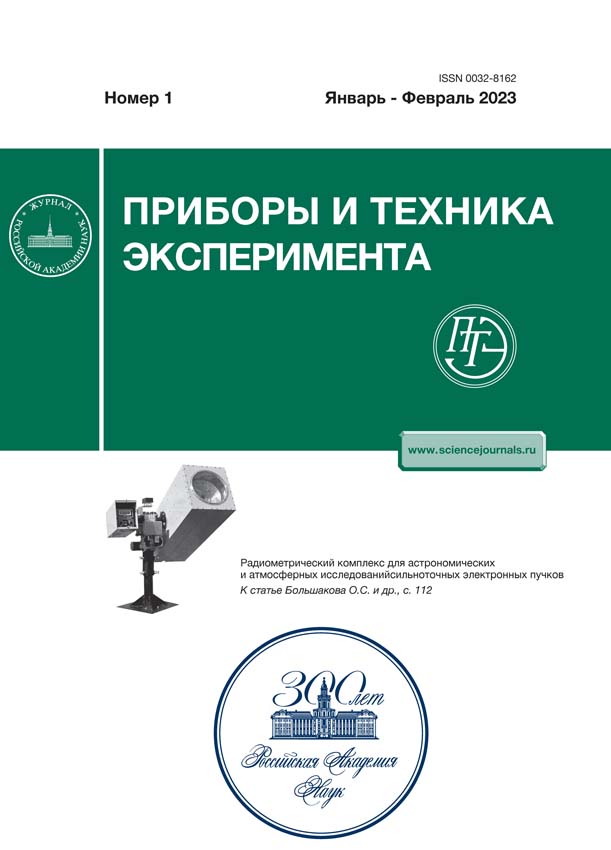The Signal-to-Noise Ratio of a Silicon Tracking System Module for the BM@N Experiment
- Autores: Dementev D.V.1, Shitenkov M.O.1, Leontyev V.V.1,2, Sukhov N.V.1, Sheremetev A.D.1, Murin Y.A.1
-
Afiliações:
- Veksler and Baldin Laboratory of High Energy Physics, Joint Institute for Nuclear Research
- Skobel’tsyn Institute of Nuclear Physics, Moscow State University
- Edição: Nº 1 (2023)
- Páginas: 23-32
- Seção: ТЕХНИКА ЯДЕРНОГО ЭКСПЕРИМЕНТА
- URL: https://cardiosomatics.ru/0032-8162/article/view/670590
- DOI: https://doi.org/10.31857/S0032816223010111
- EDN: https://elibrary.ru/JSRETI
- ID: 670590
Citar
Texto integral
Resumo
A module with a double-sided microstrip silicon sensor is the basic element of the silicon tracking system (STS) for the BM@N experiment. The signal-to-noise ratio is the main parameter of the tracking system for a high-energy physics experiment, which is determined by the complex influence of the parameters of the detector and the front-end electronics. An analytical model of various noise sources is presented, and parameters determining the efficiency of charge collection from the detector are discussed. The noise has been measured for several module configurations differing in the sensor size and the length of the signal cable connecting the sensor strips to the input circuits of the front-end electronics. Results of measurements of the signal from a 106Ru β-source are presented. It is shown that the signal-to-noise ratio for STS modules is at least 18.
Sobre autores
D. Dementev
Veksler and Baldin Laboratory of High Energy Physics, Joint Institute for Nuclear Research
Email: dementiev@jinr.ru
141980, Dubna, Moscow oblast, Russia
M. Shitenkov
Veksler and Baldin Laboratory of High Energy Physics, Joint Institute for Nuclear Research
Email: dementiev@jinr.ru
141980, Dubna, Moscow oblast, Russia
V. Leontyev
Veksler and Baldin Laboratory of High Energy Physics, Joint Institute for Nuclear Research; Skobel’tsyn Institute of Nuclear Physics, Moscow State University
Email: dementiev@jinr.ru
141980, Dubna, Moscow oblast, Russia; 119991, Moscow, Russia
N. Sukhov
Veksler and Baldin Laboratory of High Energy Physics, Joint Institute for Nuclear Research
Email: dementiev@jinr.ru
141980, Dubna, Moscow oblast, Russia
A. Sheremetev
Veksler and Baldin Laboratory of High Energy Physics, Joint Institute for Nuclear Research
Email: dementiev@jinr.ru
141980, Dubna, Moscow oblast, Russia
Yu. Murin
Veksler and Baldin Laboratory of High Energy Physics, Joint Institute for Nuclear Research
Autor responsável pela correspondência
Email: dementiev@jinr.ru
141980, Dubna, Moscow oblast, Russia
Bibliografia
- Senger P., Dementev D., Heuser J., Kapishin M., Lavrik E., Murin Y., Maksymchuk A., Schmidt H.R., Schmidt C., Senger A., Zinchenko A. // Particles. 2019. V. 2. P. 481. https://doi.org/10.3390/particles2040029
- Vasiliev S.E., Galavanov A.V., Kapishin M.N., Karjavine V.Yu., Kulish E.M., Lenivenko V.V., Makankin A.M., Maksymchuk A.I., Piyadin S.M., Khabarov S.V. // Phys. Part. Nuclei Lett. 2019. V. 16. P. 859. https://doi.org/10.1134/S1547477119060542
- Dementev D., Elsha V., Murin Y., Sheremetev A., Shitenkow M., Sukhov N., Baranov A., Kharlamov P., Merkin M., Lavrik E., Senger A., Senger P. // Phys. Part. Nuclei. 2022. V. 53. № 2. P. 197. https://doi.org/10.1134/S1063779622020265
- CBM Collaboration. Ablyazimov T. et al. // Eur. Phys. J. 2017. V. 53. P. 60. https://doi.org/10.1140/epja/i2017-12248-y
- Sheremetiev A., Dementev D., Elsha V., Kolozhvari A., Murin Y., Shitenkov M., Sukhov N. // Phys. Part. Nuclei. 2022. V. 53. № 2. P. 377. https://doi.org/10.1134/S1063779622020745
- Kasinski K., Rodriguez-Rodriguez A., Lehnert J., Zubrzycka W., Szczygiel R., Otfinowski P., Kleczek R., Schmidt C.J. // Nucl. Instr. and Meth. A. 2018. V. 908. P. 225. https://doi.org/10.1016/j.nima.2018.08.076
- Shitenkov M., Dementev D., Voronin A., Kovalev I., Kudryashov I., Kurganov A., Murin Yu. // Phys. Part. Nuclei. 2021. V. 52. P. 826. https://doi.org/10.1134/S1063779621040559
- Panasenko I., Schmidt H.R., Lavrik E., Simons C., Schmid C.J. Microcable quality assurance: capacitance measurements. CBM Progress Report 2016. 03 2017. http://repository.gsi.de/record/201318
- Spieler H. Semiconductor Detector Systems. Semiconductor Science and Technology. V. 12. Oxford University Press, 2005. P. 34.
- Zubrzycka W., Kasinski K. “Noise considerations for the STS/MUCH readout ASIC”. CBM STS-XYTER 2.1 and SPADIC 2.2 Submission Review. https://indico.gsi.de/event/5976/
- Rodríguez Rodríguez A. PhD thesis, Johann Wolfgang Goethe-Universität Frankfurt am Main, Frankfurt am Main, 2020
- Lutz G. Semiconductor Radiation Detectors. Berlin, Heidelberg: Springer-Verlag, 2007. https://doi.org/10.1007/978-3-540-71679-2
- Spieler H. Semiconductor Detector Systems. Semiconductor Science and Technology. V. 12. Oxford University Press, 2005. P. 17.
- https://www.sciencedirect.com/topics/medicine-and-dentistry/ruthenium-106
- rd RD48 STATUS REPORT. CERN LHCC 2000-009. LEB Status Report/RD48. 31 December 1999. https://rd48.web.cern.ch/status-reports/RD48-3rd-status-report.pdf
Arquivos suplementares




















